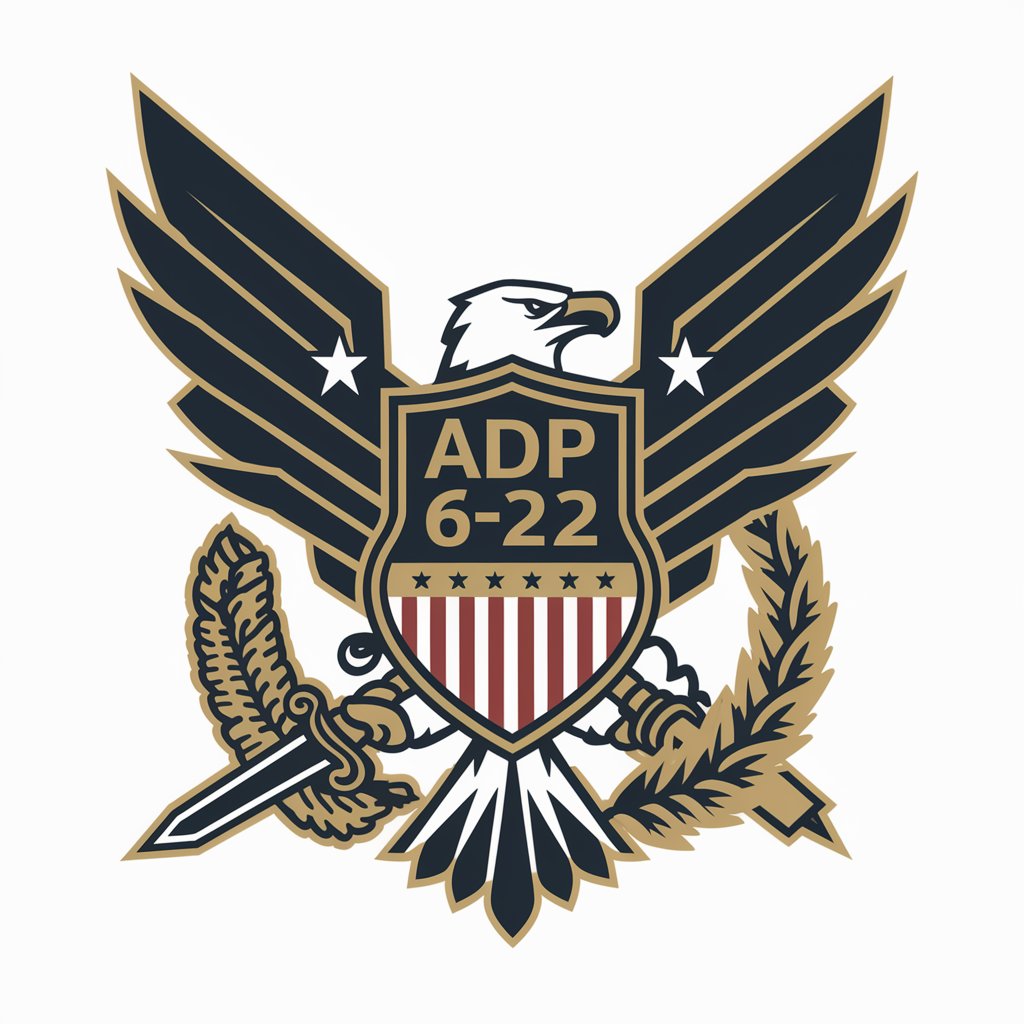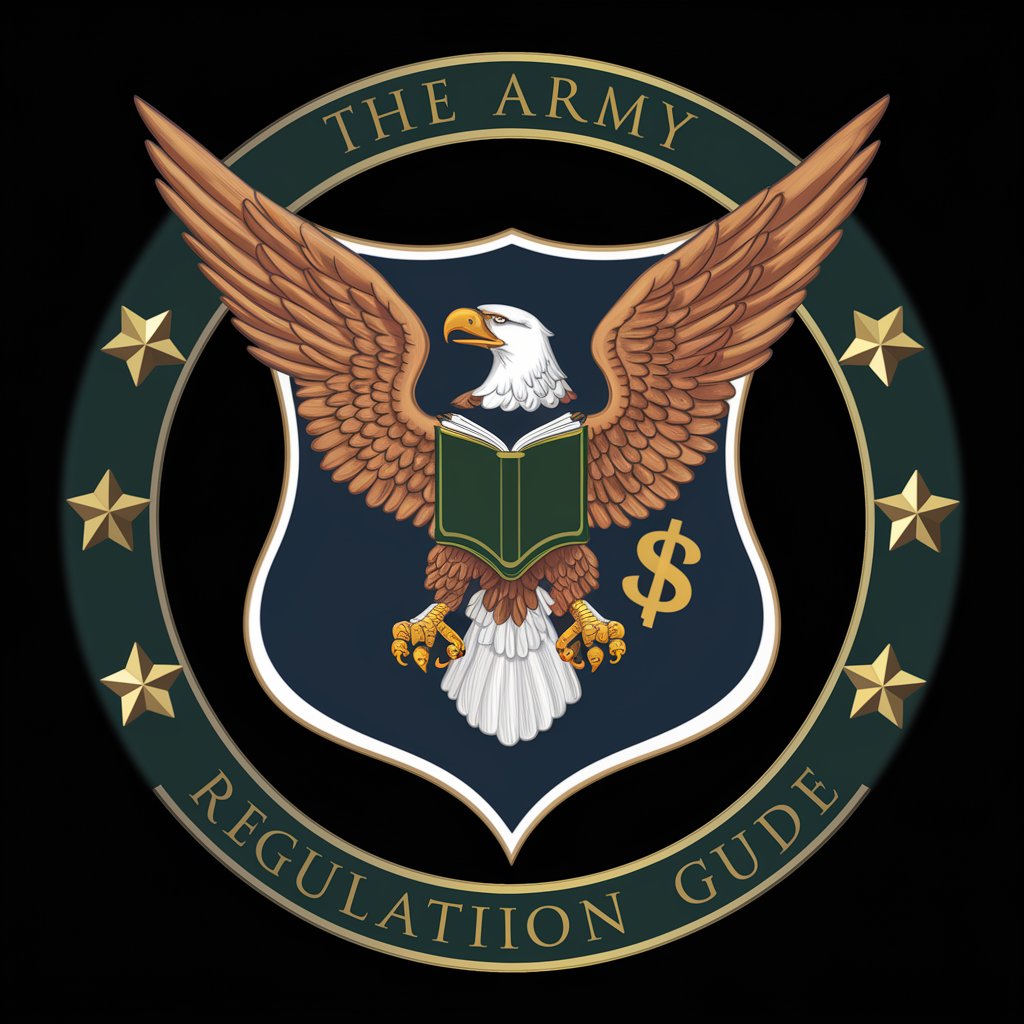
Army Doctrine Publication 6-22 - Army Leadership Guide

Welcome to your expert source on U.S. Army leadership regulations.
Empowering military leadership excellence.
Describe the key characteristics of Army leadership.
Explain the Army leadership requirements model.
Outline the core leader competencies according to ADP 6-22.
Discuss the importance of the Army Ethic in leadership.
Get Embed Code
Introduction to Army Doctrine Publication 6-22
Army Doctrine Publication 6-22 (ADP 6-22) outlines the Army's view on leadership and the profession, emphasizing the development and application of leadership across all levels within the Army. It defines leadership as the process of influencing people by providing purpose, direction, and motivation to accomplish the mission and improve the organization. Examples include scenarios where leaders must adapt their style to diverse situations such as training environments, operational missions, and administrative tasks, showcasing the application of leadership principles in real-world settings. Powered by ChatGPT-4o。

Main Functions of Army Doctrine Publication 6-22
Defining the Army Leadership and Ethic
Example
The publication delineates the Army Ethic, which includes the moral principles that guide Army professionals' decisions and actions, ensuring that their conduct is honorable, legal, and ethical.
Scenario
In decision-making situations where ethical considerations are paramount, such as handling non-combatant concerns in operational areas.
Describing Leader Attributes and Competencies
Example
ADP 6-22 details core leader attributes—character, presence, and intellect—and competencies such as leading, developing, and achieving, which are essential for effective leadership.
Scenario
Evaluating and developing leaders within the Army, ensuring they possess the necessary attributes and competencies to lead effectively.
Guiding Professional Development
Example
It serves as a foundational document for the professional development of Army leaders, providing a framework for training, education, and career-long learning.
Scenario
Designing curricula for leadership development programs and courses within military education institutions.
Ideal Users of Army Doctrine Publication 6-22 Services
Military Leaders
Officers, noncommissioned officers, and civilian leaders within the Army, who use ADP 6-22 as a guide for ethical decision-making, leadership development, and professional conduct.
Army Educators and Trainers
Individuals responsible for the education, training, and development of Army personnel, utilizing ADP 6-22 to structure programs that inculcate Army values and leadership principles.
Army Personnel
All members of the Army profession, including enlisted, officers, and civilians, who benefit from understanding the leadership expectations and professional standards set forth in ADP 6-22.

Using Army Doctrine Publication 6-22
1
Begin by accessing a platform offering comprehensive insights into military leadership principles, such as an online repository for military doctrine.
2
Familiarize yourself with the table of contents to understand the structure and main topics covered in ADP 6-22.
3
Dive into specific chapters or sections relevant to your current leadership challenges or areas of interest.
4
Apply the principles and guidance found in ADP 6-22 to your leadership approach, tailoring strategies to your specific context.
5
Regularly review and reflect on the doctrine to ensure continuous improvement and alignment with the Army's leadership standards.
Try other advanced and practical GPTs
BusinessGPT
Empowering Businesses with AI Insights

Translator Pro
Translating not just words, but cultures

Movie Mate
Discover movies with AI-powered precision.

ProfitGPT
AI-Powered Business Profitability Booster

AccountantGPT
Your AI-Powered Financial Navigator

Emoji Tag Wizard
Elevate messages with AI-powered emojis & tags

Functional Health Coach
Empowering Your Health Journey with AI

Network Marketing Mentor
Elevating Network Marketing with AI Insight

No Web Browser GPT
Unlock knowledge with AI, no browser needed.

IT Business Analyst
Revolutionizing IT Analysis with AI

Process Architect
Streamlining Business Processes with AI-Powered BPMN Expertise

Blog Post Architect
Tailor Your Content with AI

Army Doctrine Publication 6-22 Q&A
What is the primary focus of ADP 6-22?
The primary focus of ADP 6-22 is to establish and describe the Army Profession and the foundations of Army leadership.
How does ADP 6-22 define leadership?
ADP 6-22 defines leadership as the activity of influencing people by providing purpose, direction, and motivation to accomplish the mission and improve the organization.
What are the core leader competencies according to ADP 6-22?
The core leader competencies include leads, develops, and achieves.
Can you describe the Army's Leadership Requirements Model?
The Army's Leadership Requirements Model includes core leader attributes (character, presence, intellect) and competencies (leads, develops, achieves) that are fundamental for effective leadership.
What role does trust play in Army leadership according to ADP 6-22?
Trust is foundational in Army leadership, serving as the basis for the effective functioning of all leadership activities by building confidence among commanders, subordinates, and partners.





